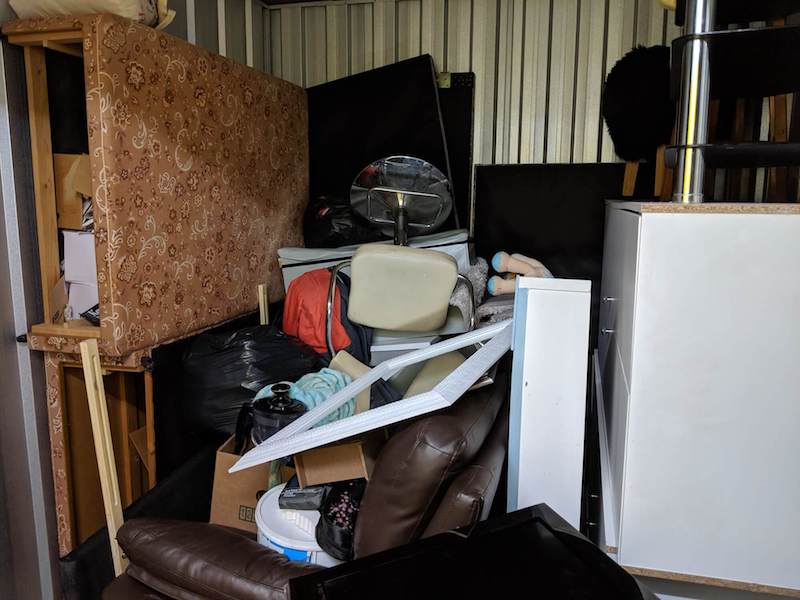
Most of us have probably seen or heard about the show Storage Wars. For those who haven’t, it’s a wildly crazy television series where they auction off storage units that have been abandoned by their owners. Different groups of people then buy these units, hoping that they’re filled with trinkets and treasures that they can turn around and sell for a profit. It's... interesting to say the least! What we don’t often see on this show is a problem many individuals face: mold in storage units.
It’s an unfortunate truth! All of those goods we pack away to keep safe are prime pickings for moisture problems and, in relation, mold.
That’s not exactly something we’re expecting to see when we roll that door open to pull out our Christmas decoration boxes that seem to multiply every year.
To keep our belongings safe, and to ensure our health doesn’t suffer from exposure to moldy items in these holding facilities, we must understand how mold in storage units can happen, how to prevent it, and what to do if this fungus finds its way into our things. Armed with this knowledge, we can rest assured our belongings are safe and go about our way, dragging out the Christmas tree.
30 Second Mold Recap
To better understand how mold can get into storage units, it’s best to start with a solid foundation of mold.
There are over 100,000 species of mold identified by researchers so far, and they all reproduce by creating microscopic spores.¹’² Picture a weed releasing its seeds into the air and creating a million weedy opportunities. Mold is similar! These tiny moldy seeds ride the air current wherever it may take them- in your car, on your scarf, inside your home, and even right into a storage unit.
Typically, a few random spores making their way into these locations aren’t a problem. A good clean with an EPA-approved cleaning product or a HEPA vacuum cleaner will get them right up. The issue arises when one of these spores finds a nice little home inside of one of these places and begins to grow.

What do they consider a perfect home? It only needs four key components:³
- Oxygen (they require very little)
- Temperature (most prefer 40-90 degrees Fahrenheit, but some can live in the extremes)
- Food (they’re like dumpster divers, they eat anything)
- Moisture (ahhhh, the golden ticket)
With the first three ingredients for life fairly easy to come by in spaces like homes and storage units, a mold spore only needs a little bit of moisture to start growing. Once this journey into the land of the living begins, it will continue to release spores into the air, which 1) tanks the indoor air quality, 2) is NOT good for your health, and 3) skyrockets the chances of a mold spore stumbling upon another nice little home.⁴’⁵ Some species of mold can also create microscopic toxins called mycotoxins that they release into the air right alongside the spores.⁶ The combined forces of these particles are a double whammy to your immune system and health.⁷’⁸ And the kicker is that they can exist in these indoor spaces without you ever knowing. They’re microscopic!
Hence the reason why we’ve got to up our knowledge of mold in storage units and how to avoid it so our belongings don’t get contaminated.
How Does Mold in Storage Units Happen?
Storage units are dark and infrequently visited locations, which is pretty much a dream for a mold spore. The only thing missing is a little magical water source. Unfortunately, that can easily pop up in these spaces.
Water inside storage units can happen in a few ways. Since they’re not visited often, leaks can occur and persist for some time before they’re discovered by the unit’s owner. The water from the leak can be a great location for mold to grow, but it can also get your belongings wet, which makes even better homes for mold colonies.
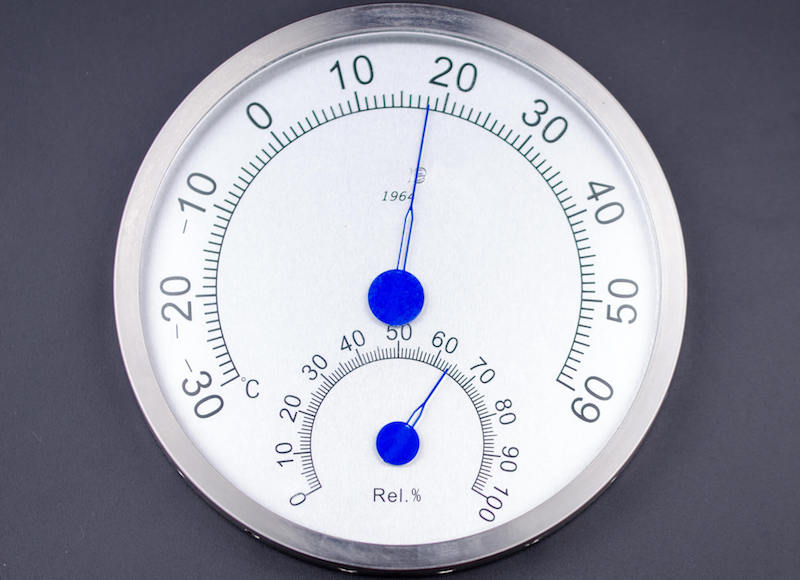
Another watery option is the high humidity these units often have. The EPA recommends that indoor spaces have a relative humidity of 30–50%, but the lower the better.⁹ High humidity can cause condensation and allow mold spores the opportunity to grow. In units that aren’t temperature controlled or those in areas with naturally high humidity, this can lead to moldy nightmares for storage owners.
Improperly dried-out items can also lead to mold growth. If owners place items that are wet or still slightly damp in the unit and close that door, those items will be in a dark-contained room that isn’t exactly known for its stellar airflow.
Chances are, these items will stay wet for quite some time. When a mold spore only needs 24–48 hours in a wet location to start growing, this is a perfect colonization opportunity.
I think we get the picture. Mold growth in storage units can happen in the blink of an eye, which is why we need to do everything we can to keep these areas dry, safe, and free from mold growth.
Preventing Mold In Storage Units
Prevention is the name of the game when it comes to keeping these storage spaces free from mold growth. That way, any mold spores that managed to sneak their way inside, either through the open door or from a unit nearby, won’t have an opportunity to colonize your storage space. Below are a series of steps you can take to avoid this fungus.
Check It Out
When you purchase a storage unit, take a good hard look at the space itself. Make sure it’s clean, dry, and free from any potential leaky situations. These could occur from cracks in the wall, improperly sealed flooring, or issues with the ceiling. Above all, check for existing mold! If you see this or smell a musty, earthy smell (aka, Eau de-mold), it’s a good idea to high-tail it out of there and go with another option! Treat this space like you would a home. It houses all of your belongings, many of which might be incredibly sentimental. You have the right to be picky and to make sure it will be a safe location to house these items. Mold in storage units isn’t exactly an ideal scenario for keeping these belongings in tip-top condition.
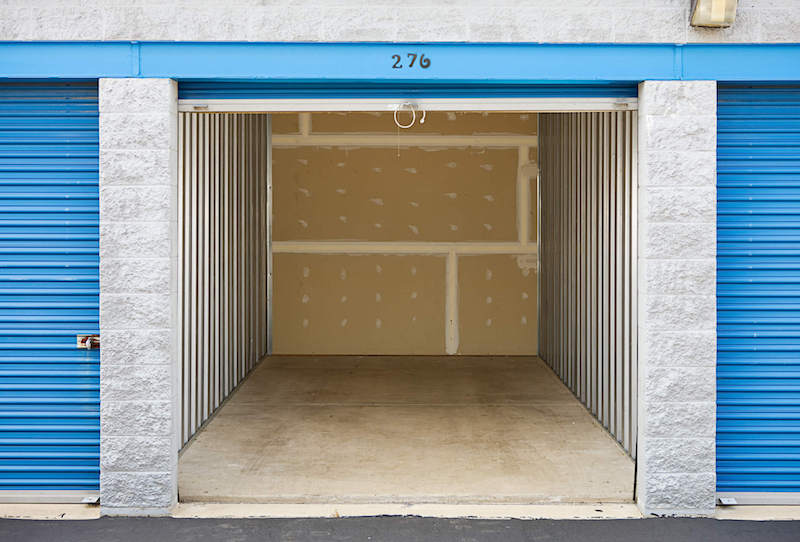
Assess Humidity Levels
Whether it's a temperature-controlled unit or not, always check the humidity level inside of a storage unit before placing your items inside. Remember that these areas should have a humidity level of 30 to 50 percent. Any higher and they’ll be ripe for moldy opportunities. Investing in a hydrometer is a great option for taking a look at what that indoor condition is like. Repeatedly measuring every time you visit the location is also a good idea just to double-check that the air is as dry as possible inside.
Maintain That Airflow
Obviously, this is difficult because a lot of storage units aren’t known for their spectacular airflow. If you can, it’s always best to opt for a space with proper ventilation, but sometimes that’s just not possible. Whether they have ventilation measures in place or not, it’s still a good idea to prep your space for as much airflow as possible. This includes not squishing items up against the walls, keeping belongings raised off the floor (like on wooden pallets), and giving every item a small personal bubble. Collectively, this will allow as much airflow as possible to occur inside of the room. More airflow means less trapped moisture and a higher chance of any rogue wet spot drying out quickly.

Keep it Squeaky Clean
This goes for the unit itself and the belongings you place inside. Make sure that the storage facility cleaned it thoroughly before renting it out to you so that any rogue mold spores were removed. In the event of a random, unexpected water event, you want to be as careful as possible to avoid moldy problems. As for belongings, these should be carefully wiped down and cleaned out before being placed inside. Again, it will remove any mold spores and potential yummy food sources that they could use for fuel. The key here is to dry them out completely before leaving them behind. As mentioned before, any water at all can spark mold growth.
As an added note, it’s a good idea to clean any items before bringing them back into your home as well! You never know if mold spores managed to collect on the surfaces and you don’t want to bring those inside your indoor environment!
Opt For A Vapor Barrier
It sounds over-the-top, but you can never go too far to prevent mold! These barriers can act as a second layer of armor to stop moisture from sneaking into your storage unit. The best locations for this plastic or foil shield are on the warm side of the storage unit and the floor. To make it even better, these items can typically be purchased right at your local hardware store. It doesn’t get any easier than that to prevent mold in storage units!
Be Picky
Choose a storage facility that understands how important your belongings are to you and how mold is a top no-no for keeping these items safe. Temperature-controlled units are best, if possible, but also look for things like ventilation installations and humidity control additions. If they use dehumidifiers, that’s a huge plus! If the unit is outside, take a look at their drainage measures if it rains, and what water-proofing measures they installed so that outside water doesn’t get inside your unit. Pepper them with as many questions as you can so that you have peace of mind that you’re going with the right company.

Give It A Visit
Instead of only visiting your unit around the holidays or during the annual house-cleaning purge, pop in frequently! Unexpected water events can happen in any indoor space, so make sure to check it over for any watery opportunities or visible mold. Use your nose as well, in case there’s hidden mold you can’t see. Again, mold typically smells earthy, musty, and stale.
Use All-Star Packing Material
Plastic bags are easy, but not the best way to go. Use airtight containers or bags as much as possible. This will keep out any moisture that gets inside the storage unit, either from a leak or high humidity. Dry goods are protected goods. For things like books or art, acid-free storage boxes are a good option to keep moisture out while still allowing for airflow. And don’t forget to throw in the desiccators!
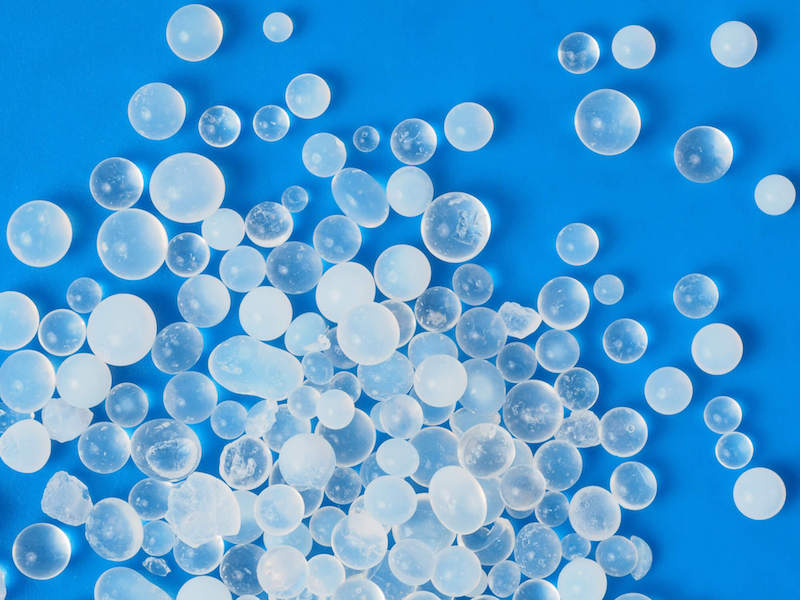
Go Desiccator Crazy
Desiccator materials are moisture-absorbing wizards. They’ll help to pull out and store any moisture that managed to sneak into your place. Silica gel packets are a great option to use. Throw these little baggies into boxes, drawers, or any other space you can think of to put them. It’s never a bad idea to just place them around the room as well for an added layer of protection. Kind of like hanging up garlic to keep the vampires away.
Collectively, these steps will work wonders to prevent mold in storage units and keep your treasures safe and sound.
All That And You Still Got Mold? It Happens!
Mold spores are persistent. If they see an opportunity, they will slip right in! Sometimes, no matter what you do, a random water event will occur, like a flash flood or a collapsed roof, and poof, your belongings will get moldy. It’s unfortunate, but it’s just a part of life. When mold in storage units occurs, make sure to follow these steps:
- Tackle the problem ASAP! The longer the mold is there, the more chance it has to grow elsewhere or become a bigger problem.
- Remove all of the items from that storage space. Remember, those mold spores are everywhere, so wear protective gear like gloves and a mask!
- Decide what you can get rid of. Mold exposure can have serious consequences for your health, so it’s better to be safe than sorry.
- Clean what you have to keep. This step is incredibly important to get right.
For hard surfaces, use an EPA-approved cleaning product, scrub well, and then use a microfiber towel to wipe. These towels are 100 times more efficient at removing particles. Repeat this process at least 3 times just in case mycotoxins or bacteria are present as well as the mold. Porous items are a bit trickier because the mold can get its roots deep down in the material. For items like couches, vacuum with a HEPA vacuum, spray potentially contaminated surfaces with products like the EC3 disinfectant, rub in the disinfectant uniformly to avoid spots, wait 5–10 minutes for the disinfectant to dissolve into the fabric, and suspend the dirt and oils, and then wipe this residue away using a clean microfiber cloth. Make sure to let the fabric dry completely to prevent more moist environments that microorganisms can grow in. For clothing or machine-washable items, put them in with an EPA-approved laundry additive. Don’t just clean the moldy items, either. Every item in the space could have mold spores or mycotoxins on them, so clean them all thoroughly.

- Decide whether you’d like to move your items to a different unit or a different storage facility entirely. Mold remediation of an indoor space must be done properly to ensure that the mold and contamination are taken care of completely. You’ll want to ensure this facility is doing the job right!
- Check your contract and renter's insurance to see if they’ll cover the amount for any lost items or damage.
Ticking off these boxes will help remove the mold that snuck into your life.
Keep in mind, though, that you should be extra careful when reintroducing any of these items into your home. When mold in storage units contaminates your belongings, it’s difficult to determine whether you were able to remove every single contaminant from every single surface, and you never know what you or your family members’ reaction will be to exposure. It’s best to do one item or box at a time just to make sure these items won’t make you feel ill or introduce a bunch of spores into your home that could spark a mold growth problem. Cross-contamination is never what we want, especially if it has to do with mold.
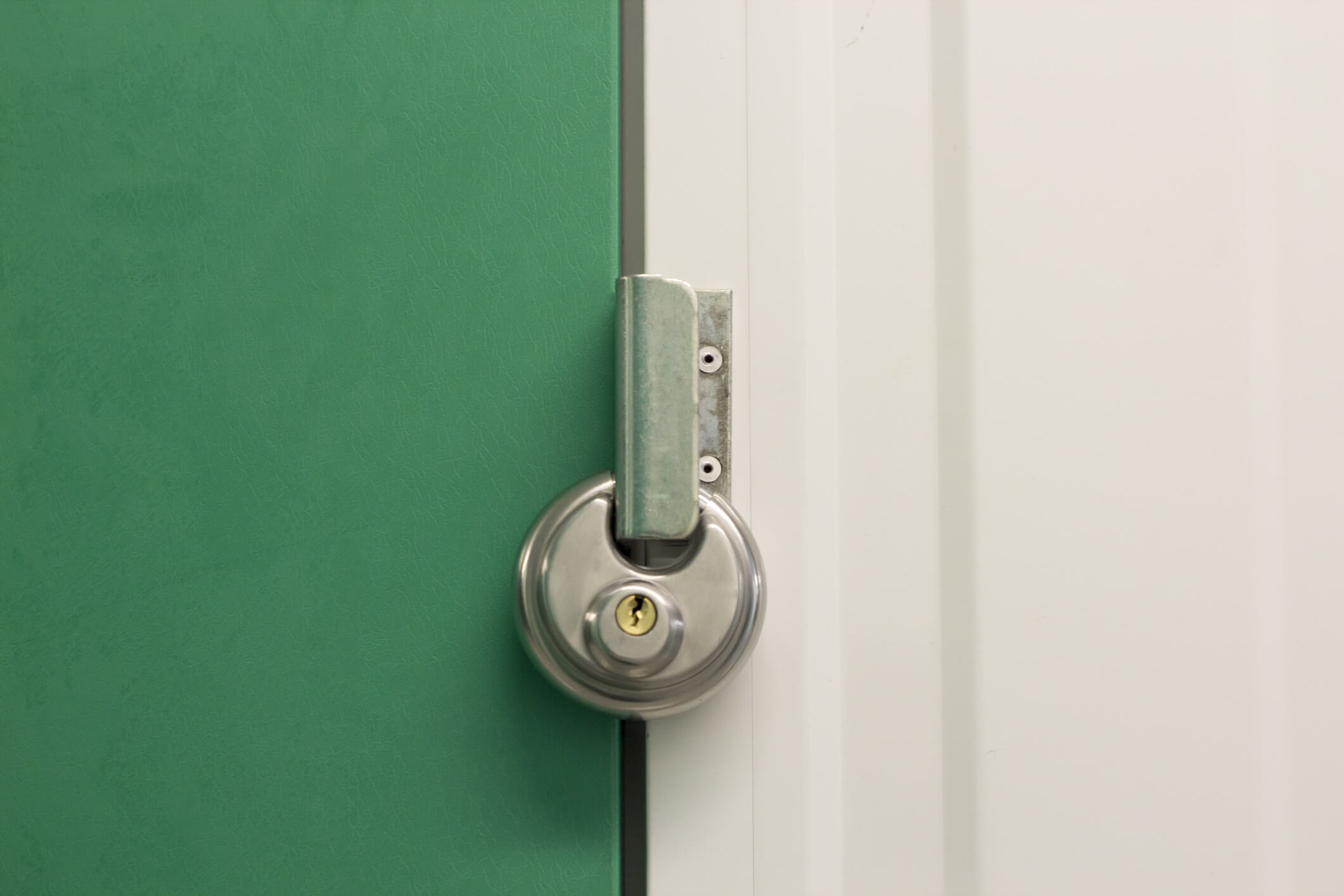
Not In My Storage Unit!
At the end of the day, we want to do everything we can to avoid mold growth. From exposure-related symptoms to ruined personal belongings, it’s the ultimate party pooper that we didn’t even invite in the first place. Storage facilities are fantastic for keeping any items that we just don’t have space for in our homes, but mold in storage units takes away the magic of these spaces.
Make sure that your mold awareness extends to these storage areas so that your belongings and your home can remain free from mold growth. Uncontaminated indoor spaces lead to better indoor air quality and a healthier, happier you! If you’re ever in doubt about what to do for other preventative measures, what to ask storage facility employees, or how to handle mold, reach out to an expert who can answer your questions and help you create a safe indoor environment.
Citations:
- Environmental Protection Agency. (n.d.). Mold. EPA. Retrieved November 18, 2021, from https://www.epa.gov/mold.
- Centers for Disease Control and Prevention. (2020, August 11). Basic facts about mold and dampness. Centers for Disease Control and Prevention. Retrieved November 18, 2021, from https://www.cdc.gov/mold/faqs.htm.
- Lstiburek, J., Brennan, T., & Yost, N. (2002, January 15). Rr-0208: What you need to know about mold. Building Science Corporation. Retrieved November 18, from https://www.buildingscience.com/documents/reports/rr-0208-what-you-need-to-know-about-mold/view.
- Curtis, L., Lieberman, A., Stark, M., Rea, W., & Vetter, M. (2004). Adverse health effects of indoor molds. Journal of Nutritional & Environmental Medicine, 14(3), 261-274.
- Bush, R. K., Portnoy, J. M., Saxon, A., Terr, A. I., & Wood, R. A. (2006). The medical effects of mold exposure. Journal of Allergy and Clinical Immunology, 117(2), 326-333
- World Health Organization. (n.d.). Mycotoxins. World Health Organization. Retrieved November 18, 2021, from https://www.who.int/news-room/fact-sheets/detail/mycotoxins.
- Environmental and Occupational Health Assessment Program, & Environmental and Occupational Health Assessment Program, & Health Science Section, Mold Basics for Primary Care Clinicians (2009). Hartford, CT; Connecticut Department of Public Health. , H. S. S., Mold Basics for Primary Care Clinicians 1–10 (2009). Hartford, CT; Connecticut Department of Public Health.
- Fisk, W. J., Lei-Gomez, Q., & Mendell, M. J. (2007). Meta-analyses of the associations of respiratory health effects with dampness and mold in homes. Indoor air, 17(4), 284-296.
- EPA. (n.d.). A Brief Guide to Mold, Moisture, and Your Home. EPA. Retrieved November 18, 2021, from https://www.epa.gov/mold/brief-guide-mold-moisture-and-your-home#tab-6.

